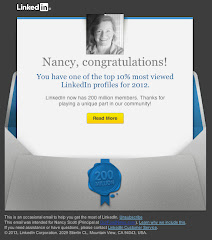Today, the best educators on the scene are the experts who actually do the marketing themselves: agencies, publishers, SEO experts, website designers, mobile app developers, database pros, research companies, publishers, copywriters, media coaches, PR folks, software developers – everybody is selling directly to the user.
The tools vary, but every channel is both digital and direct-to-the-buyer: blogs, whitepapers, webinars, e-newsletters, podcasts, videos, and apps. This is education when you need and where you want. Mostly, it’s free. That’s what content marketing is all about. And if my email inbox is any proof, many users get 10 to 15 shots per day at FREE “learning.”
It’s a rich time to be in business. But something has still been missing … and that’s the face-to-face, one-on-one, we’re-in-the-same-network dynamic that traditional “association meetings” have provided. Worry not, that, too, is coming for those who want it.
Blogger, writer, and business icon Rohit Bhargava hosted a "likenomics" webinar to celebrate publication of his new book by the same name. Since Likeonomics is a book about why we trust people we like, and how to be more trusted in business, life and work, the virtual event was conducted using a new platform called Shindig. Registrants were encouraged to enable their own webcams so everyone attending the event could see everyone else. Or, as the announcement noted, “Instead of having a one-way boring conversation with powerpoint, the session is fully interactive - with video chatting on both sides.”
Check out shindig.com for any number of fascinating groups to join and chats to embrace. For example, on May 16 at 6:00 p.m., Leslie Poston presents "From dummy to genius, monetizing social metrics,” a session based on her book Social Media Metrics for Dummies.


